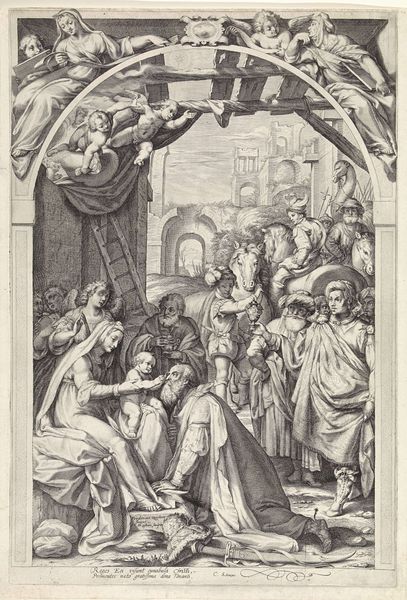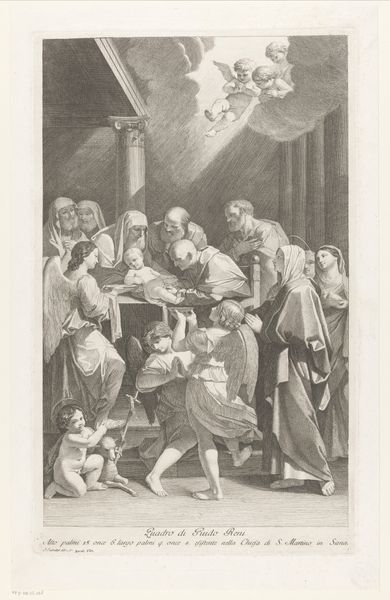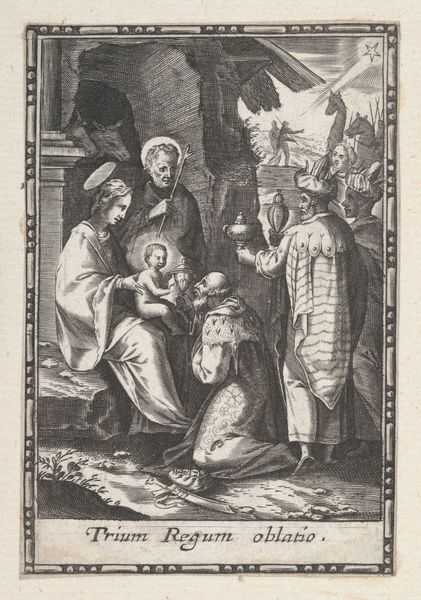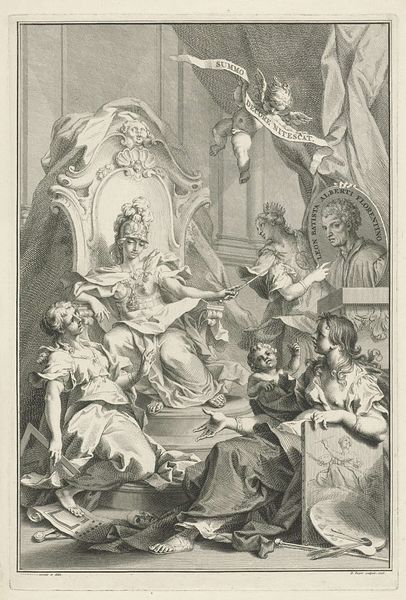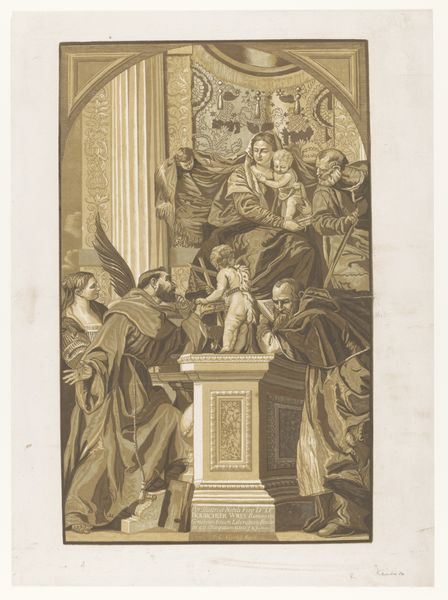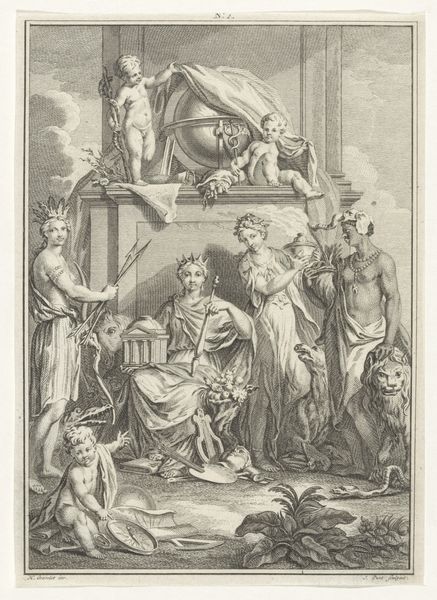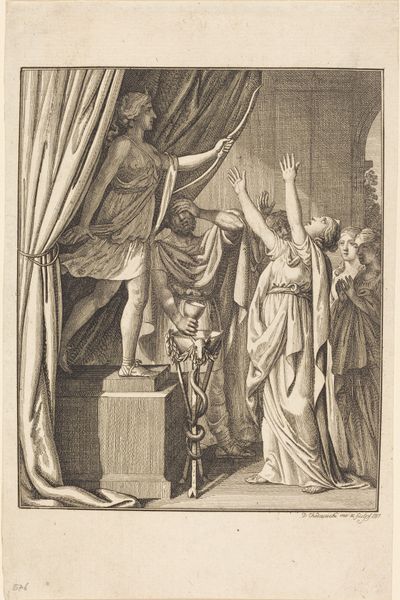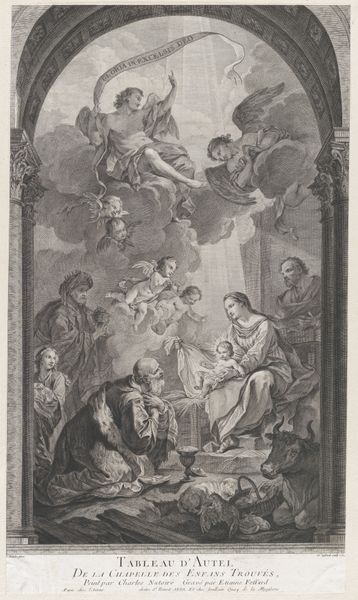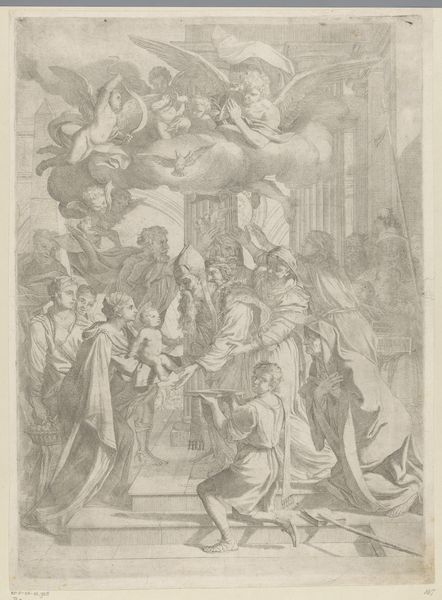
Plate 27: The female personification of Fortitude, holding a pillar and stroking a lion; from the 'Galeria nel Palazzo Farnese in Roma ... dipinta da Annibale Caracci' 1657
0:00
0:00
drawing, print, engraving
#
drawing
#
baroque
# print
#
history-painting
#
italian-renaissance
#
engraving
Dimensions: Sheet: 5 7/8 × 4 1/8 in. (15 × 10.5 cm)
Copyright: Public Domain
Editor: This engraving from 1657 by Carlo Cesio, "Plate 27: The female personification of Fortitude…" depicts a scene with heavenly and earthly figures. I’m immediately struck by how it presents these powerful men almost reverent to what is above. What do you see in this work? Curator: I see a visualization of power structures deeply embedded within the era's religious and social consciousness. It's a fascinating, albeit idealized, portrayal of fortitude that reinforces societal norms. The female figure bestows this quality on those men kneeling on the ground, suggesting not only physical bravery, but also intellectual fortitude, or the steadfast defense of societal norms, specifically here a clear gendered expectation of devotion to something higher. Who benefits from this construction of fortitude? Editor: That’s interesting. I hadn’t considered the gendering of it like that. So, in this context, fortitude isn't just about inner strength but about maintaining a certain social and religious order. Curator: Precisely. Consider the artistic style itself—Baroque—known for its drama and grandeur. Doesn’t it serve to amplify these notions of power and divine endorsement? This theatricality emphasizes the Church's strength but also reinforces hierarchical structures by dramatizing submission and allegiance. What effect does the architectural frame around the scene have on your interpretation? Editor: I suppose it almost legitimizes what's happening inside, making it seem like an important event being captured and framed, set apart from everyday life. It feels a little constructed, like propaganda, if I'm honest. Curator: Indeed. This piece serves as a visual tool that perpetuates particular power dynamics and invites scrutiny. Art is rarely neutral; it’s a product of its time and actively participates in the conversations of its culture. Editor: That’s given me a lot to think about. I hadn’t looked at it as a commentary on the dynamics of power at all. Curator: And I, by your fresh perspective, have now realized there are some important points to be made around social commentary, thanks to this reinterpretation.
Comments
No comments
Be the first to comment and join the conversation on the ultimate creative platform.
